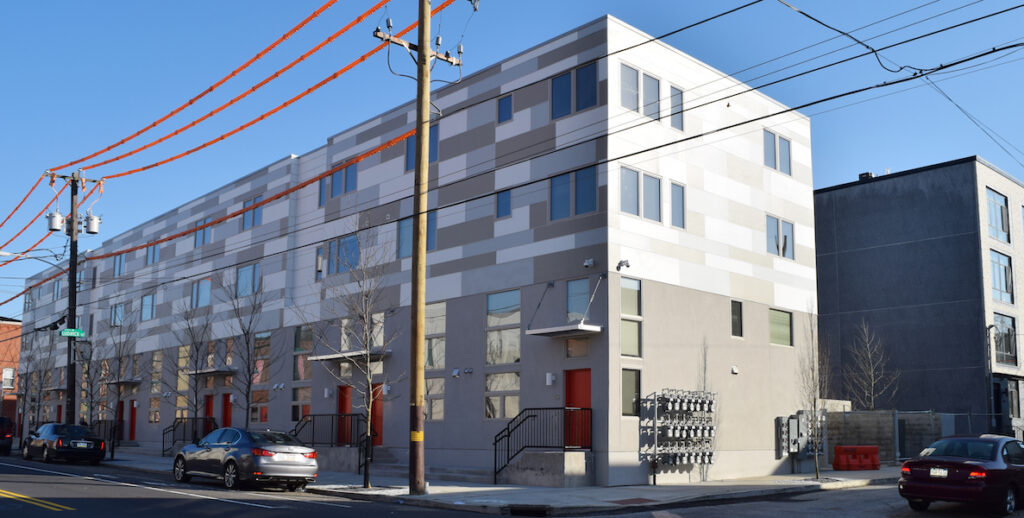Philadelphia is a city known for tough-minded pragmatism and artistic accomplishment (just see Mural Arts Philadelphia as a prime example). That’s what’s needed to transform a deplorable situation at UArts into something magnificent for arts, artists, and the city.
In a recent Citizen article, Malcolm Burnley proposed the idea of incentivizing developers to turn some of the 600,000 square feet of the school’s Center City real estate into much-needed child-care facilities. This is a brilliant idea — but I would go further.
We should redevelop those 600,000 square feet into a hub for artistic education, low-cost housing for practicing artists, and child-care facilities for artists and students that would focus on early arts education.
Let’s envision what this would mean: Imagine affordable housing for working artists; Philly residents taking courses in painting, sculpture, acting, directing, music and arts management in now-abandoned classrooms, while children are cared for in daycare programs; practicing artists engaging in productive careers near venues for exhibiting and performing, as they do at places like the Wilma Theater, Suzanne Roberts Theater and Kimmel Center Campus, and mentoring the students studying in the buildings’ classrooms and studios. And all of this would happen as the city prepares a massive greening effort along the Avenue of The Arts.
Philadelphia has done some of this before, on a small scale. In Kensington, Coral Street Arts House opened in a former factory in 2006, with sliding-scale affordable rents for working artists. In 2017, HopePHL (formerly People’s Emergency Center and Youth Service, Inc.) opened affordable live/work space to artists at 4050 Apartments at 4050 Haverford Avenue in West Philadelphia. The three-story building contains 20 one-, two-, and three-bedroom apartments. Now in its seventh year, the community is thriving, with a waitlist.
The “affordable housing” designation means that housing applicants must qualify for federal, state and / or city funding. With help from HopePHL, prospective residents at 4050 Apartments apply for assistance through the Philadelphia Housing Authority (PHA) and the Pennsylvania Housing Finance Agency. They must demonstrate that they have been working artists for at least one year in any variety of artistic genres. Their application includes a statement of artistic goals, 10 artistic pieces created in the last year, and three professional references.
Trish Downey, senior director of external affairs at HopePHL reports that the 20 apartments at 4050 Haverford were designed with artists’ needs in mind. The bi-level units have a southern exposure for the best natural light and high ceilings. Similarly, Oxford Mills in South Kensington offers discounted housing for teachers, and in New York City, there are a few low-cost housing opportunities for artists and writers, most with no open waitlist. UArts buildings, already created for artists, would be a natural fit to expand this model.
An idea others could steal
The scope of my imagined UArts / Avenue of the Arts educational-residential opportunity would be unique to Philadelphia and serve as an example for educational-residential artistic projects elsewhere. These opportunities are sorely needed at a time when the healing power of the arts has never been more necessary. It’s a chance to consolidate funds designated for a variety of purposes: housing, child care and the arts.
Let’s take a moment and imagine affordable (government subsidized) and low-cost housing for Philly artists on a larger scale in Center City. Think of the opportunities for students to learn from the artists and for the artists to connect with new talent. Philadelphia would become even more of a long-term destination for artists and art students from all over the nation.
Let me say right off that I don’t often wish that I were still a university president. I like my life of writing, consulting and enjoying my family. For the first time, I find myself wishing I had an institutional base to move forward on this idea.
All I can do is to call on local university presidents, the mayor, arts commissions, UArts donors, the city, state and other leaders in the arts to come together to make this happen. In other words: Be leaders on this crucial issue. (Calling John Fry, current President of Drexel and future President of Temple, which has already expressed interest in salvaging UArts programming.)
In my book, Leading Academic Change: Vision, Strategy, Transformation, I say that “a vision without a strategy is a fantasy.” I appeal to readers who might be in a position to implement this idea to develop a strategy for creating something wonderful and Philly-worthy on the Avenue of the Arts.
Elaine Maimon, Ph.D., is an Advisor at the American Council on Education. She is the author of Leading Academic Change: Vision, Strategy, Transformation. Her long career in higher education has encompassed top executive positions at public universities as well as distinction as a scholar in rhetoric/composition. Her co-authored book, Writing In The Arts and Sciences, has been designated as a landmark text. She is a Distinguished Fellow of the Association for Writing Across the Curriculum. Follow @epmaimon on X.

